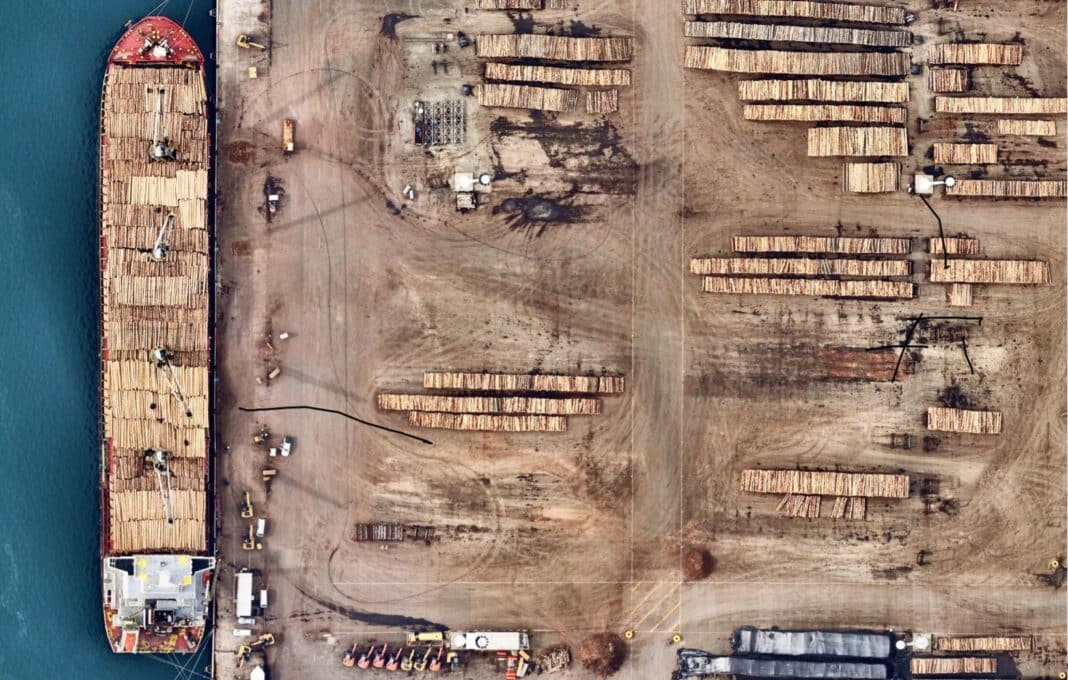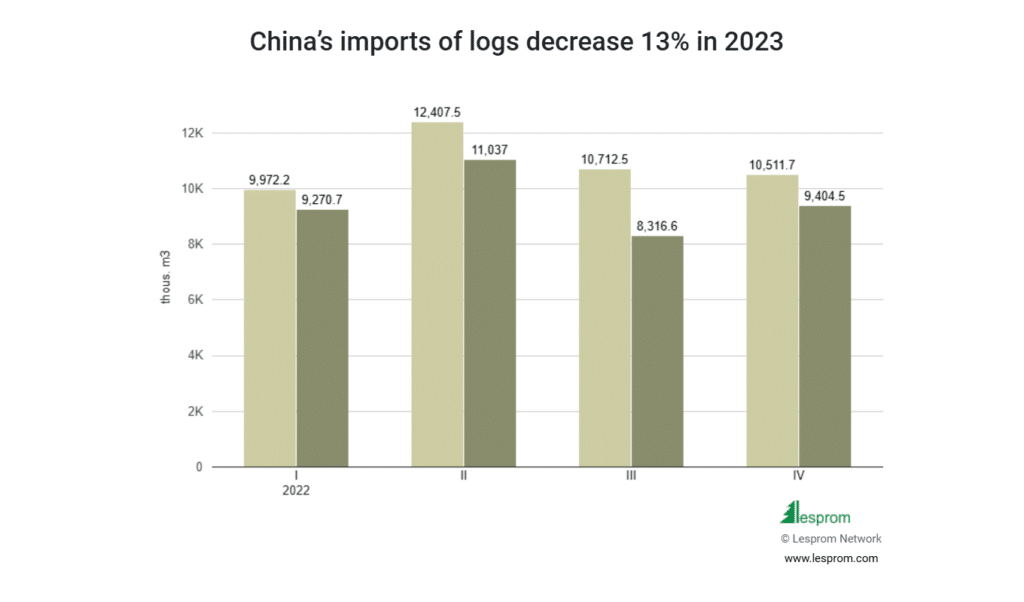Weifang Suntop Imp.& Exp. Co.,ltd
- All
- Product Name
- Product Keyword
- Product Model
- Product Summary
- Product Description
- Multi Field Search
Views: 31 Author: Jason Ross Publish Time: 2024-09-09 Origin: https://woodcentral.com.au/

More than 89% of NZ log exporters are traded into the Chinese mega port system - with the $3.5b log export trade representing more than 50% of China's total log exports. However, Chinese total log imports are now in long-term decline, with China now pivoting from importing unprocessed logs to processed lumber. (Photo Credit: Marsden Point New Zealand)
China’s demand for unprocessed timber is in structural decline, with new data from China Customs revealing that the world’s largest timber market took just 3.63 million cubic metres of logs in May— continuing a long-term drop in imports over 18 months.
It comes as China’s take-up of logs is down 6% (from 9.404 million cubic metres to 8.851 million cubic metres) for the December to March quarters, with log demand down 13% – from 42.97 million to 38.03 million cubic metres – for the 2022 and 2023 calendar years.

At the same time that log imports soften, “China’s log inventory (at its mega ports) continues to reduce slowly, and daily port off-take remains around 70,000 per day,” according to Scott Downs, Sales and Marketing Director for PF Olsen, who said that exporters are continuing to be stung from increased freight costs, amid ongoing congestion in the global shipping network.
According to Rudolf van Rensburg, the co-author of China – Forest, Log & Lumber Outlook,” a 197-page report produced by Russ Taylor Global and Margules Groome Consulting, it’s unlikely that the volume of Chinese log imports will return to past levels, “with China pivoting from logs to lumber amid a global scramble for a declining amount of global logs.”
“We expect that Chinese lumber exports will grow, offsetting the decline in log exports amid a ban on log exports from Ukraine and Russia, bark beetle infestations in Europe, and a slowdown in NZ harvesting,” he said.

Mr van Rensburg said China is now building a “maritime empire” of shipping and land ports, which have emerged as a key part of its supply chain for processed and unprocessed timber. (Photo Credit: YIUCHEUNG via Shutterstock)
As it stands, China is New Zealand’s (as well as Australia’s) most important log market, with more than 89.2% of radiata pine logs (in April) that left NZ processed through China’s ports—ahead of South Korea at 4.7%, India at 3.5%, and Japan at 1.2%.
At the same time, New Zealand is also China’s most crucial import market, with China Customs data showing that more than half of all logs processed at ports were from New Zealand (51.1%), ahead of PNG (6.5%), the United States (5.7%), Russia (5.3%) and the Solomons (4.7%).

The Li River in rural Guilin, Guangxi, China, is one of the world’s great afforestation success stories. China is now hoping to create engineered wood and pulp products from the world’s largest eucalypt plantation and export them to global markets. (Photo Credit: SeanPavone via Envato Elements)
In March, Wood Central reported that China is now addressing its “supply gap” (at least in hardwoods) and, thanks to more than 40 years of policy development, is rapidly boosting plantation establishment to attain its long-term goal of “wood product self-sufficiency.”
At the same time, it is investing massively in Oriented Strand Board (OSB) and particleboard, with Wood Central last week revealing that more than 50 new plants are under construction.
Whilst log exports remain low, China Customs reports that timber furniture exports grew 27% year-on-year in May to 41.4 million pieces, with the export value rising 9.8% to US $2.12 billion. Plywood exports also increased by 9.5% year-on-year to 993,000 m3, with a 4.6% rise in value to US $441 million.
Sales of newly built housing have tumbled more than 40% on the year to early May. The figure is around 30% lower than in 2019, before the Covid-19 pandemic – leading steel and lumber manufacturers to seek global export markets to sell the surplus supply of steel and timber (Photo Credit: 236809795 via Shutterstock Images)
Steel exports also reached 9.6 million tonnes, the highest monthly total since 2016, with China’s extremely soft housing market leading steel exporters to seek overseas markets to make up for collapsing local demand.